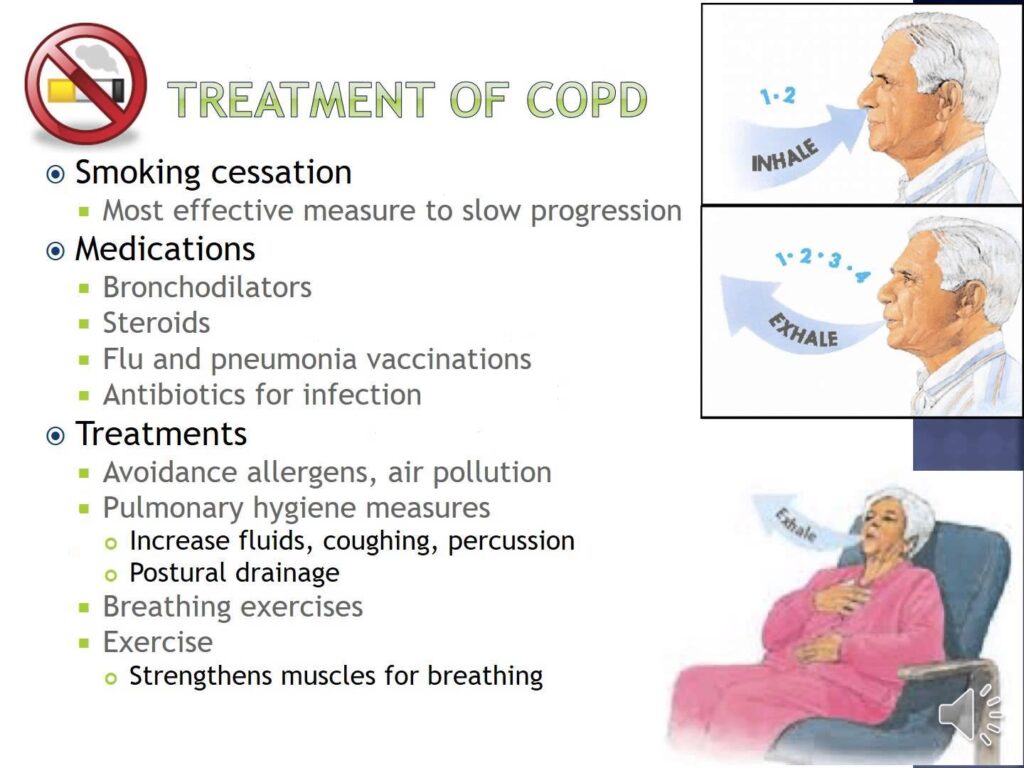Pulmonary hygiene, previously known as pulmonary toilet, refers to exercises and procedures that help to clear your airways of mucus and other secretions. This ensures that your lungs get enough oxygen and your respiratory system works efficiently.
Pulmonary hygiene can be part of a treatment plan for any condition that affects your breathing abilities, including:
- chronic obstructive pulmonary disease (COPD)
- asthma
- bronchitis
- cystic fibrosis
- pneumonia
- emphysema
- muscular dystrophy
There are several pulmonary hygiene methods and approaches. Some can be done on your own at home, while others require a visit to your healthcare provider.
Read on to learn more about some of the most common pulmonary hygiene methods and how to get the most out of them.
Breathing exercises can help you in several ways, from relaxing your airways after a coughing fit to clearing them without the need for a big cough.
Here are two breathing exercises that can help you clear your airways:
Relaxed breathing
To practice relaxed breathing, do the following:
- Relax your neck and shoulders.
- Place one hand on your stomach.
- Exhale as slowly as you can through your mouth.
- Breathe in slowly and deeply, making sure to keep your shoulders down and relaxed.
Repeat these steps four or five times a day.
Huffing
This exercise requires you to “huff” by breathing hard out of your mouth, as though you were creating fog on a mirror.
You can do it two ways:
- Inhale as you usually would, then push your breath out as hard as you can.
- Take a deep breath and exhale with short, sharp breaths.
Suctioning involves the use of a thin, flexible tube called a suction catheter. At one end, the catheter is attached to a device that pulls air through the tube. The other end is placed into your airway to remove secretions.
This can be uncomfortable, but it only takes about 10 to 15 seconds to do. If you need more than one session at a time, you’ll get a break in between each one. The catheter will usually be removed and discarded after each procedure.
This method of strengthening and controlling your breathing uses a device called an incentive spirometer. It’s a clear, hollow cylinder with a flexible tube attached to it. At the other end of the tube is a mouthpiece through which you’ll exhale and inhale.
As you exhale, a tiny ball or other indicator goes up and down inside the spirometer, depending on how much you can exhale. The device also includes a gauge to measure how slowly you exhale. Your healthcare provider will explain how to use the device properly.
Spirometry is recommended for people recovering from surgery or who have a respiratory condition, such as pneumonia. You can usually do it at home while sitting in a chair or on the edge of your bed.
Generally, the steps are as follows:
- Hold the incentive spirometer in your hand.
- Place the mouthpiece in your mouth and wrap your lips tightly around it.
- Breathe in slowly and deeply.
- Hold your breath for as long as you can.
- Exhale slowly.
After each run-through, take a moment to collect your breath and relax. You’ll likely be advised to do this roughly 10 times per hour.
Living with COPD? See what your spirometry test score can tell you about your respiratory health.
Percussion, also called cupping or clapping, is a type of pulmonary hygiene method you can usually do at home, though you’ll need someone to assist you. You’ll also want to get clear instructions from your healthcare provider first about what to do.
Generally, percussion is done by striking the chest or back with cupped hands, making sure all parts of both lungs are covered. This repeated contact helps to break up thick secretions in the lungs.
If you’re very frail or have experienced heart problems or rib injuries, this might not be the best pulmonary hygiene method for you.
Vibration is similar to percussion. However, instead of cupped hands, the palms are flatter.
The person performing the procedure keeps one arm straight, with the palm of that hand on your chest or back. They’ll place their other hand on top, rapidly moving it side to side to create a vibration.
This method helps to loosen secretions in the lungs.
Postural drainage relies on gravity to help you clear your airways. It’s especially helpful in the morning for clearing secretions that have built up overnight. Sometimes, it’s combined with other pulmonary hygiene methods, such as breathing exercises or vibration.
There are many positions you can use to do postural drainage, depending on the area that needs clearing.
To help clear secretions from your lower lungs, for example, lie on your back with pillows under your hips. Learn more about postural drainage, including specific positions you can try.
When done properly, pulmonary hygiene methods are generally safe, though they can be a little uncomfortable at times.
If you want to try a pulmonary hygiene method at home, make sure your healthcare provider shows you exactly how to do it first. This will help to ensure that the method you’re using is as safe and effective as possible. It might help to bring a close friend or family member with you to the appointment so they can learn how to help.
Pulmonary hygiene can be a useful part of your treatment plan, but make sure to keep up with any other treatments prescribed by your healthcare provider.
Pulmonary hygiene can offer a range of benefits if you have respiratory issues. You may have to try a few different methods to find which ones work best for you. If you’re unsure about a method of pulmonary hygiene, ask your healthcare provider for advice.
Source: healthline.com




Be the first to write a comment.